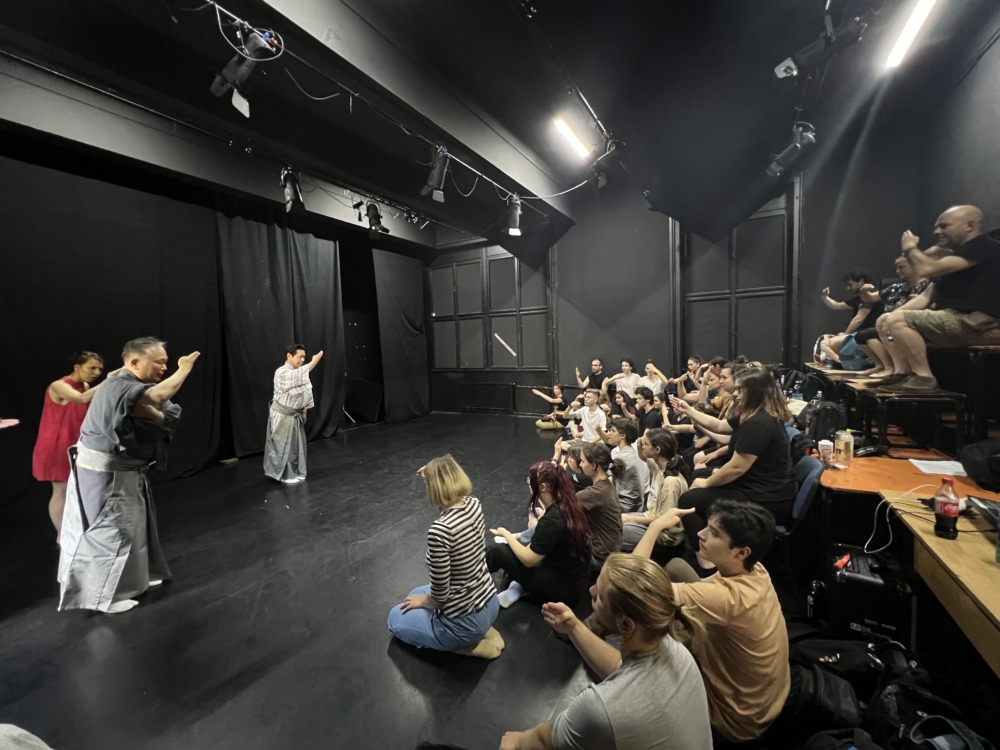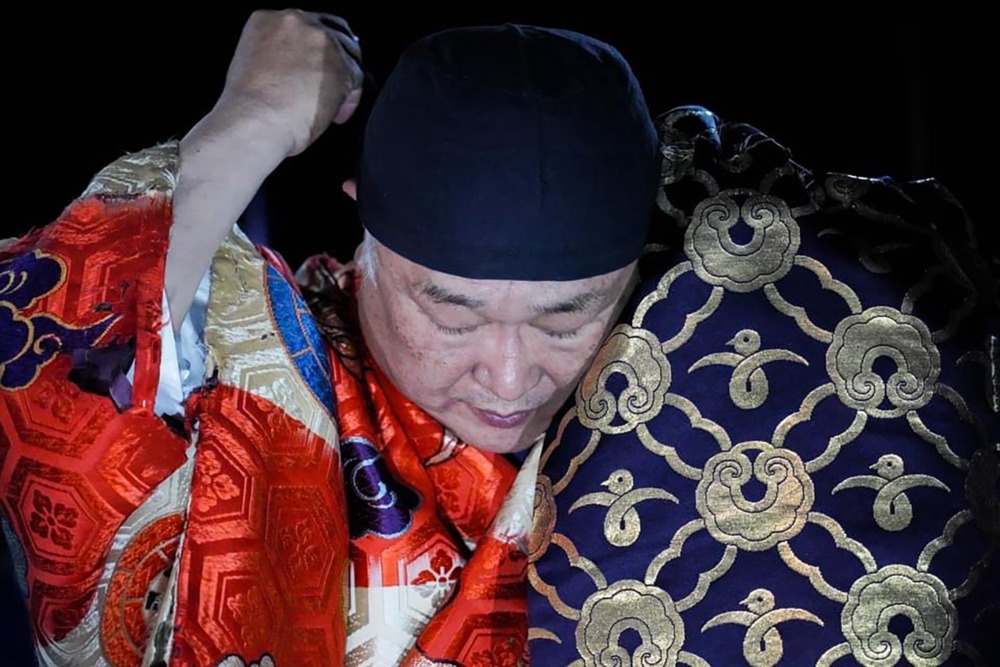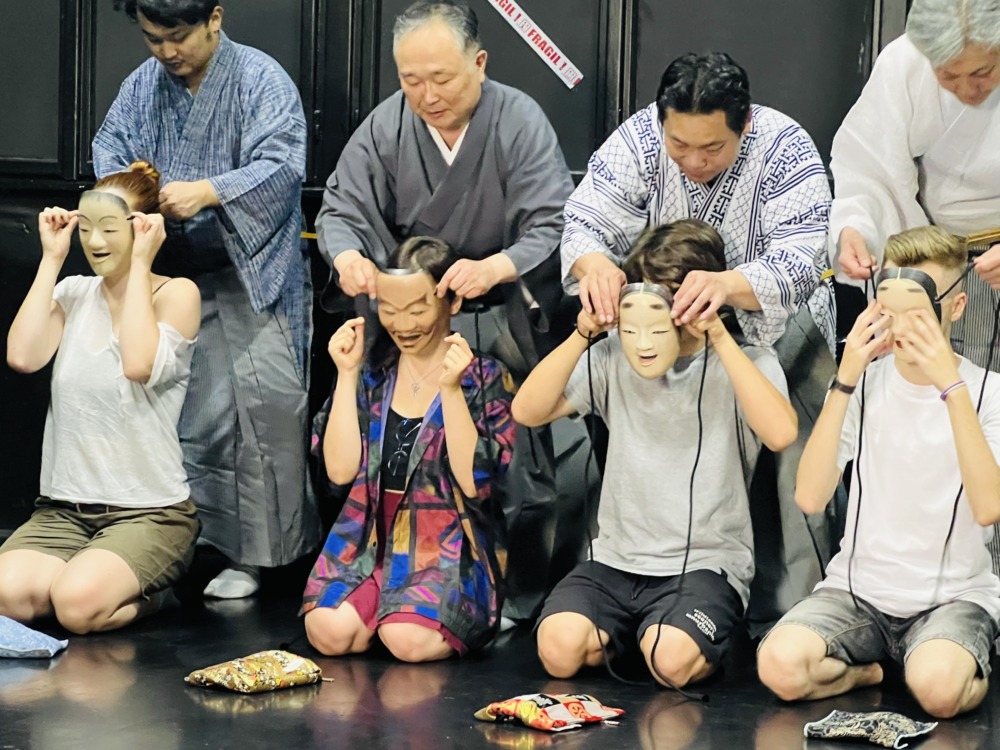Column
ColumnThe Heart of Noh – A Prayer for World Peace
We originally planned this performance for the summer of 2021, during the European Capital of Culture Timișoara 2021. Unfortunately, the global the global pandemic forced us to cancel our plans. Theaters and halls around the world were closed to prevent the spread of the new coronavirus, and the harsh measures brought all artistic and cultural activities to a standstill. We, at Yamamoto Noh Theater, were no exception, and although we are still in a difficult situation, we have continued our activities as much as possible for the past two years in cooperation with other performing arts organizations, with the sole thought that we must not let the light of culture go out. Then, just as we thought that the world crisis was finally coming to an end, the Russian invasion of Ukraine shattered our hopes that things would gradually return to normal.
These past few years have made me think about the role of culture and particularly of the performing arts for the mental wellbeing of our society. I also had a lot of time to reanalyze my experiences in organizing Noh performances abroad. Noh expresses universal emotions and deals with universal ethical problems. It originated from the ancient Japanese rituals of ancestor worship, and the three most common themes in all Noh plays are 1) mourning the dead; 2) vanquishing evil; and 3) praying for peace and prosperity. Throughout its ancient history, Noh has always managed to heal people’s hearts and give them spiritual comfort. In the midst of an unstable society where the future is uncertain due to diseases and wars, we decided to harness the power of Noh to bring back hope to the people and promote the values that would reunite the world.
Since we had connections and previous experience working with various actors and audiences around the Balkan Peninsula, and had deepened our relationship with the local communities by distributing our performances online, we decided that our first post-Covid overseas performance should take place in Romania. Our main objectives were 1) to rekindle the cultural exchange between Japan and the world and promote mutual understanding through culture; 2) present Noh to as many people as possible in an easy-to-grasp, yet faithful form, and use its values for spiritual healing; and 3) lay the groundwork for a large-scale performance to be carried out in 2023 (the postponed European Capital of Culture Timișoara 2021).

Our first and most important task was to develop a new more flexible and competitive format of Noh performances that would achieve the maximum effect with the minimum number of performers and staff. After many discussions, we finally came up with a format that would present Noh as a traditional, yet still thriving and relevant performing art. The new format would differ from the usual style of presenting Noh mainly by its focus on conveying its art in the context of its historical importance, cultural significance, as well as its ethical and aesthetic functionality. Normally, some prior knowledge of Noh is required in order to enjoy a Noh performance. However, motivating the audience to learn before coming to the theatre has always been a challenge, so the new format had the goal to educate the audience while entertaining it at the same time. This format allows even first-time Noh performers to enjoy the essence of Noh on the spot. The main elements of the new format were 1) the presentation of only the highlights of different types of Noh in succession; 2) the provision of aesthetically pleasing subtitles that the audience can understand in real time; and 3) the provision of an organic explanatory demonstration for all important means of expression.
This first performance of Noh at Timișoara was a great success thanks to this new performance format. There was great feedback which raised our hopes for next year’s main performance. “Timișoara 2023” proposed the Timișoara National Theatre as the most suitable stage for a performing art with such a long history.

The performance consisted of two pieces, “Tamura” – a warrior’s play, and “Fujito” – a play depicting the love and sorrow of a mother mourning her son. The plays were connected through a musical interlude which served the function of an explanatory intermission and music demonstration. The programme was subtitled in Romanian, making it easy to understand while preserving the original beauty of the text. We wanted to ensure that the audience could understand the history and aesthetics of Noh, its means of expression, and its significance in today’s world, simply by coming to the venue and watching the performance without any prior knowledge of Noh.

On the day before the performance, we also held a workshop for local students, actors and dancers, who had the opportunity not only to learn about the various gestures and means of expression of Noh, but also to put on masks and costumes. We were surprised by the large number of participants as well as their energy and enthusiasm. We sincerely hope that the universal elements of Noh that we present at our workshops and performances, will be used as building bricks for new performing arts in the future.








